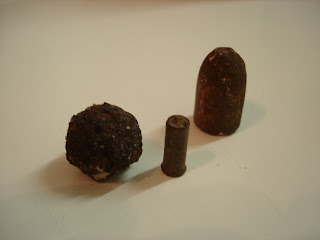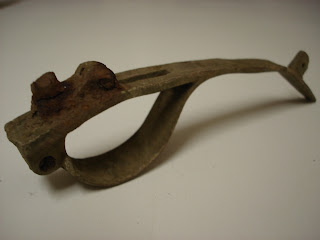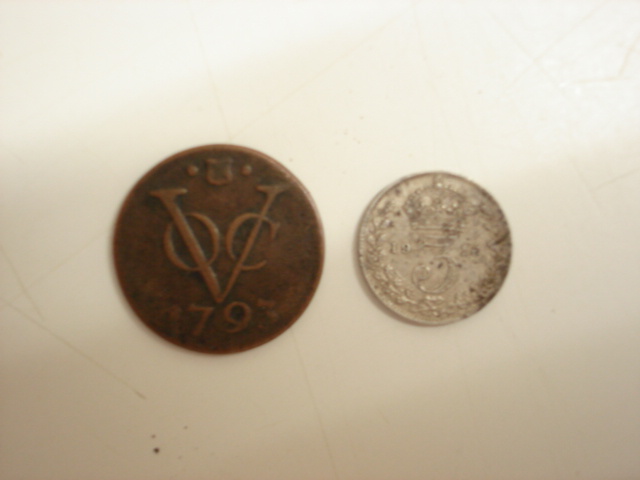The farm is rich in history , with the first title deed being 1698 from non other than Simon van der Stel himself.
Another interesting piece of history is that Napoleon's secretary , The Count Del Las Cases spent 3 months here in the year 1816. He was put here when the British authorities became wary of a plot to rescue Napoleon from
St Helena. He described it as being at the very extremity of human civilization and referred to it as " the Desert of Tygerberg"
The farm has been in the present owners' family since 1852 and although the farm has undergone some considerable changes over the years, there remains a good deal of land that has not been hunted.
Maybe I should just make it clear that by hunt, I mean with a metal detector not a rifle! For those readers that are not familiar with the hobby most of us refer to the search as a "Hunt"...for obvious reasons.
The farm is mostly covered with vineyards but there are still a few
natural fields and one large wheat field.
After getting permission from the owner, I started hunting various parts of the farm in order to get a better picture of what was going on where
during the past.
I have worked four areas of the farm so far and they have all produced interesting finds, some spots more than others. The farm is blessed with some awesome oak trees and poplar forests. A small stream also cuts through the property.
It is at the base of one of these giants, in a small clearing that I have concentrated my last two hunts.
Well it has turned out to be the richest part of the farm so far and I have named it "The Bank".
I really don't know what went on in this little patch but people have been losing coins here for quite a while.
The earliest coin at this spot has been a 1936 silver sixpence, in excellent condition for the punishment it has endured.
 |
| 1936 silver Sixpence |
and turned out pretty good.
The dark coin to the right is a 1942 silver 2 Shilling, and this is typically how it looks straight out of the ground.
All in all I have recovered coins from 1936,1942,1951,1961,1962 and then some from the 1970's and 1980's in this small area.
After getting a decent signal next to a tree today I kind of figured out why the 1800's coins are probably so elusive. Below is a shot I took with my phone of the target, once it was uncovered. It turned out to be another 1961 half cent.But just look how far it was down and I still had to pry it from underneath that root.


1961 half cent and the dark area above it is the hole it came out of. It took me a while to eventually find it.
This coin cleaned up very nicely.
Other items that I have found here are a collection of buckles and buttons , and a really old spoon. The marks on the spoon are quite badly affected by the ground and I am still working on pinpointing a date on it.


Also some bullet casings and a very large calibre bullet head.

From the other areas I have hunted on this farm , some of the better finds are pictured below.

This is the hand forged brass trigger guard from an early rifle, I really searched the area but could find no trace of the rest of the rifle.
Below is a VOC coin from 1793, and a 1916 silver George 5th 3 penny

So that is my story for today, I was out there for about three hours and I think that I will be trying a new spot
on the next outing. I think I have pretty much covered this area and taken the good stuff out of the ground.
Next I am going to don my wellingtons and get started in the stream, the early farm inhabitants would have used the stream for washing , bathing and the collection of water for the house. Now it is just a matter of finding out where they did what.




